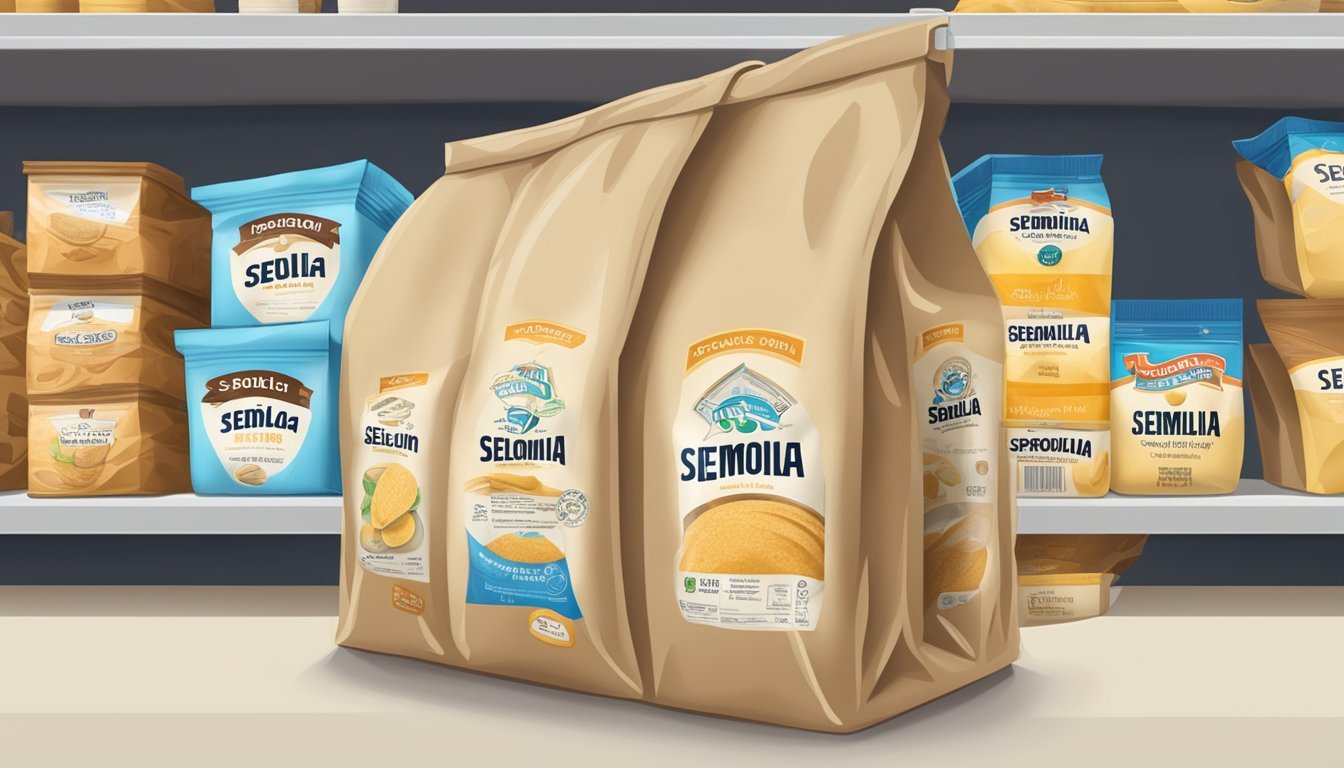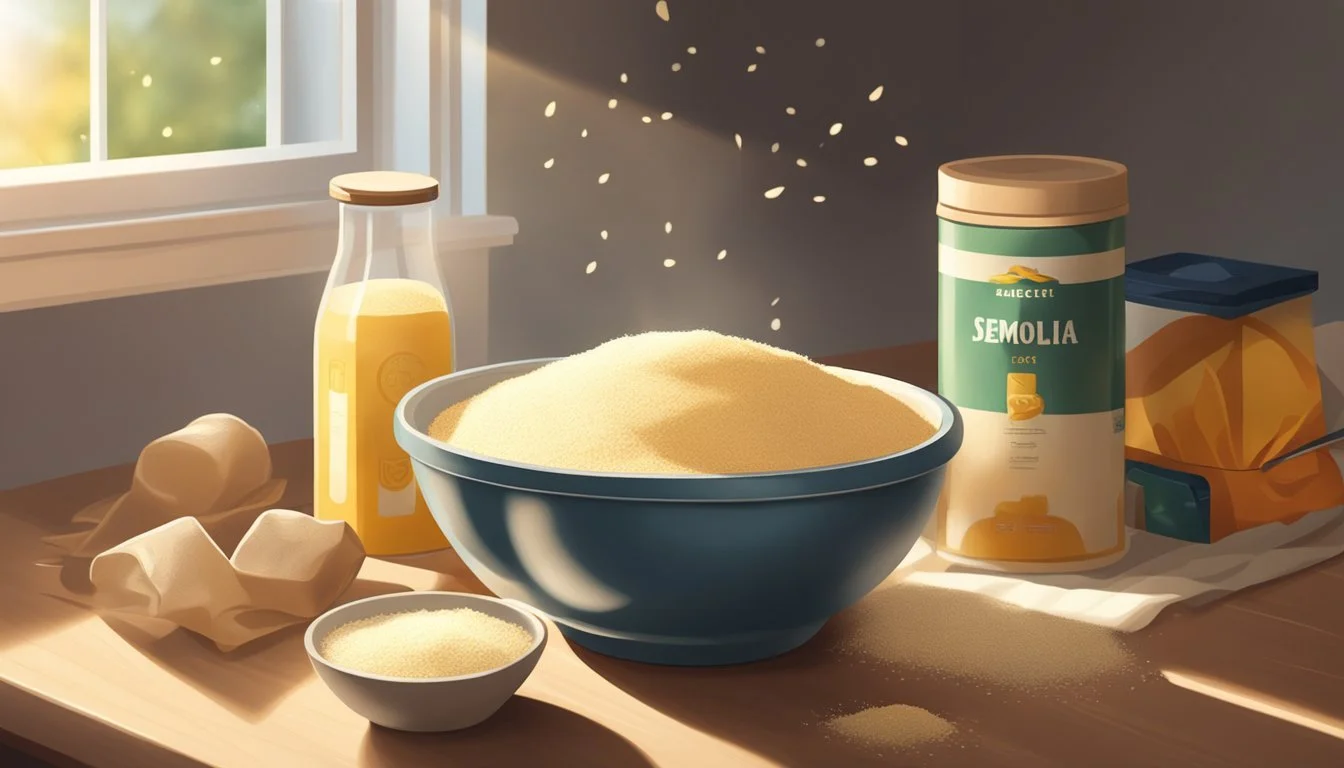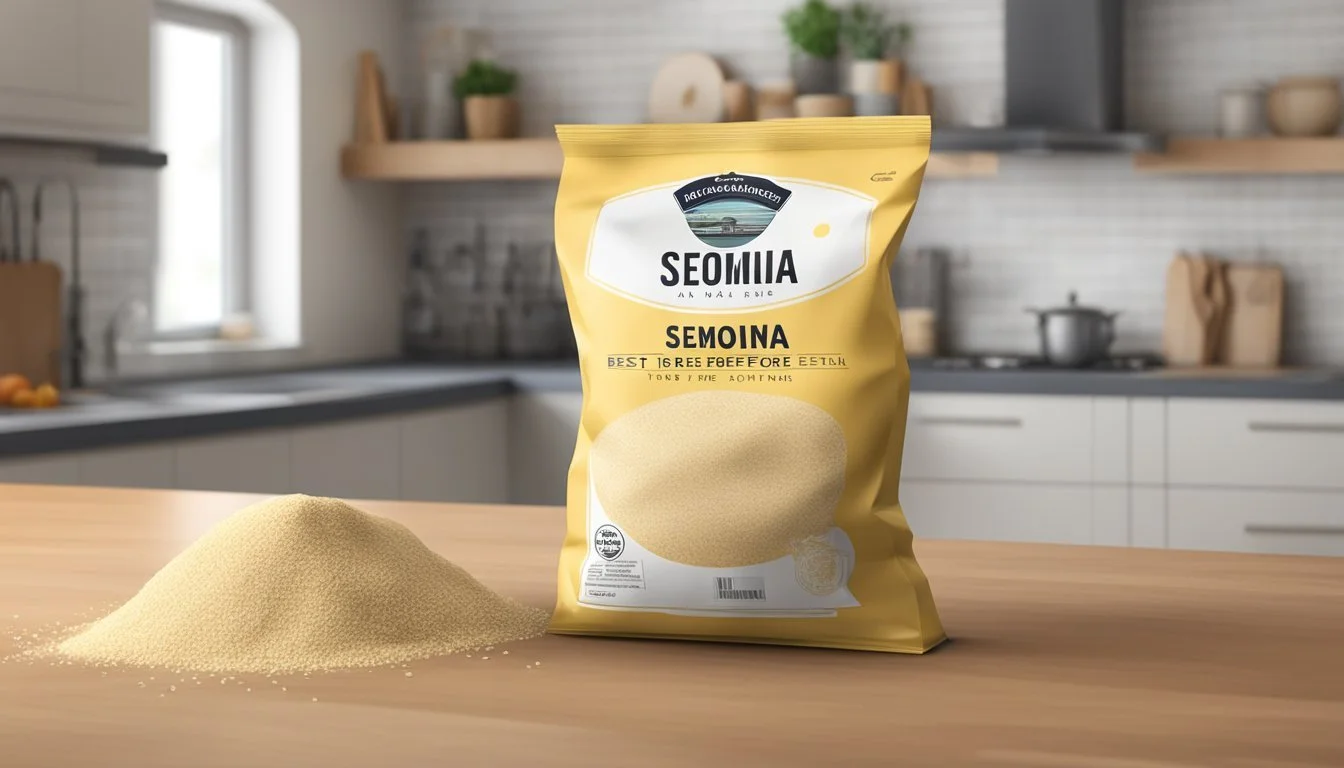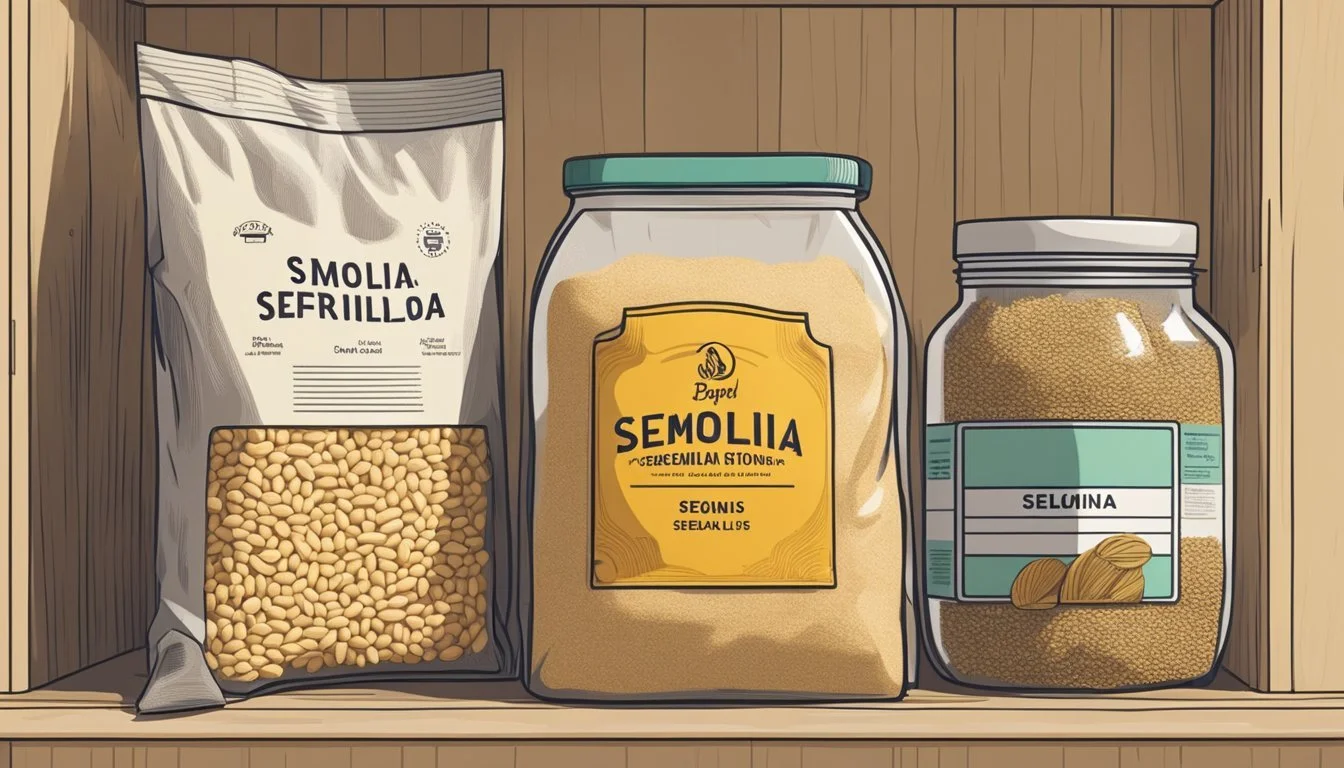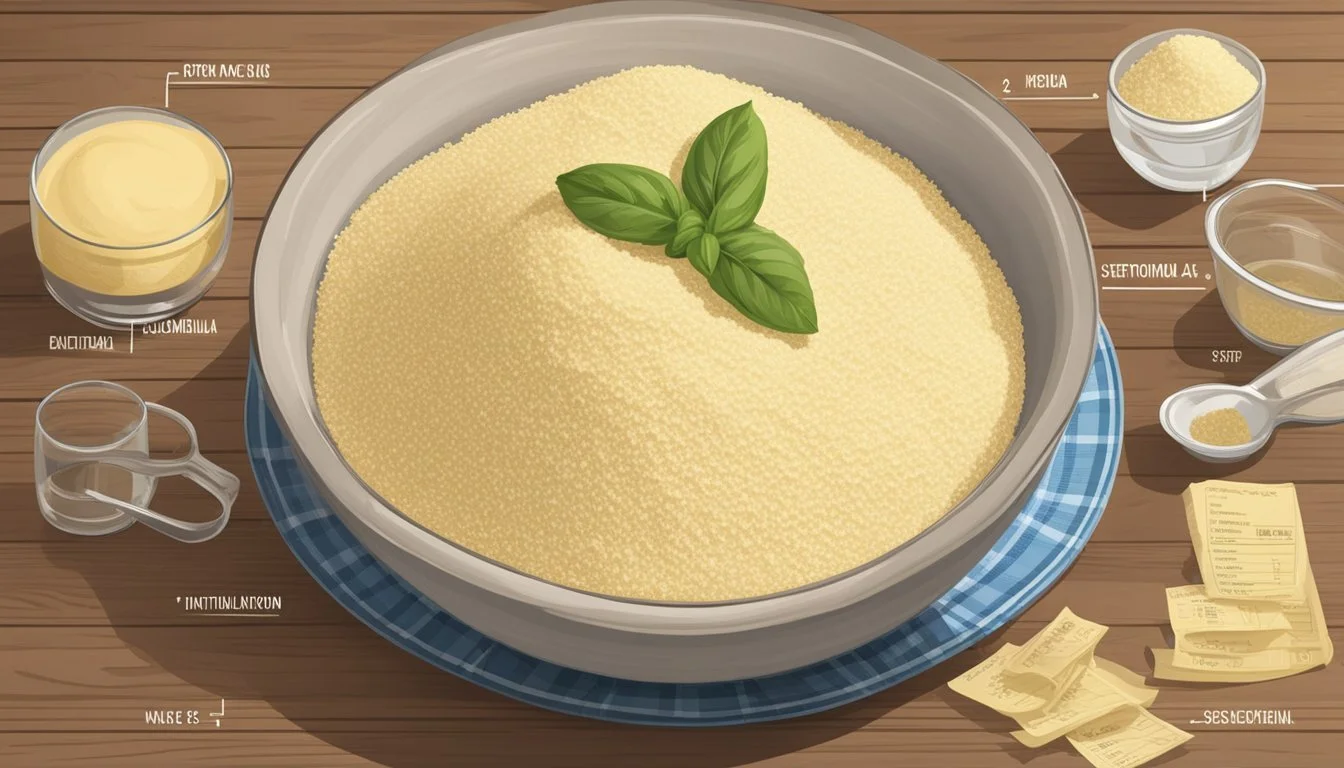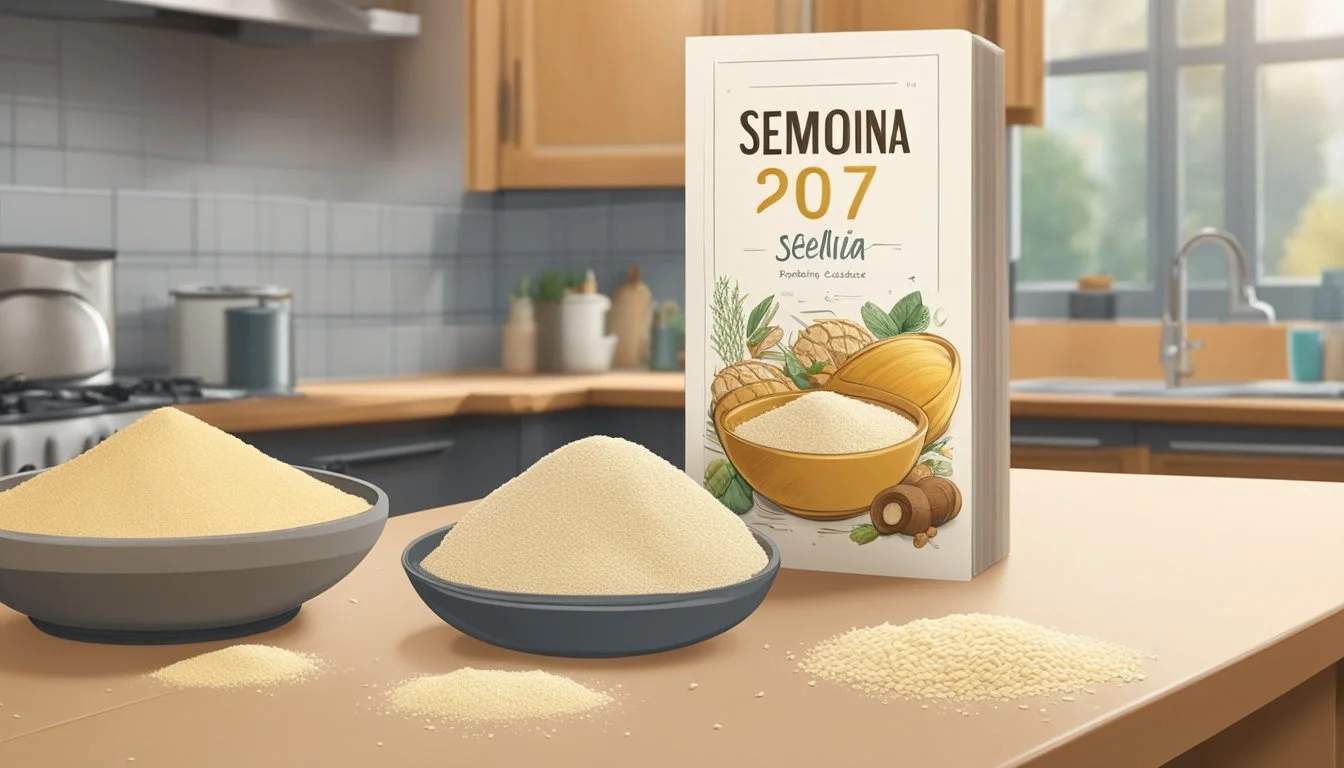How Long Does Semolina Last?
Shelf Life and Storage Insights
Semolina flour (how long does semolina flour last?), derived from durum wheat, is a coarse, purified wheat middling that holds a special place in both savory and sweet culinary traditions. Its robust texture and ability to maintain shape under heat make it ideal for pasta (What wine goes well with pasta?) and bread (how long does bread last?)-making. The shelf life of semolina flour is of interest to anyone who values the longevity and quality of their cooking ingredients.
Under optimal conditions, semolina can last between 6 to 12 months when stored in a cool, dry place, shielded from humidity. The presence of moisture can hasten the deterioration process, resulting in a compromised quality of the semolina flour. It's crucial to store semolina properly to preserve its freshness and prevent spoilage. Sealing it in an airtight container away from direct light and varying temperatures can maintain its quality over its shelf life.
The flour's longevity also depends on whether it is kept sealed in its original packaging or has been transferred to another container after opening. Regular checks for any changes in smell, texture, or color can help determine if the semolina is still suitable for use. A consistent and careful approach to storage will ensure that semolina flour remains a reliable and high-quality ingredient in various recipes.
Understanding Semolina
Semolina is a versatile wheat product known for its role in creating a diverse range of foods, distinguished by its texture and gluten content.
What Is Semolina?
Semolina is the coarse, purified wheat middlings of durum wheat primarily used in making pasta and bread. Created from the endosperm—the nutritious center part of the grain—it's a rich source of protein and vitamins. The milling process of semolina flour results in a more granular texture, differentiating it from the fine consistency of typical wheat flours.
Types of Semolina
Semolina can vary in terms of texture and granulation. The common distinction lies between coarse semolina and fine semolina:
Coarse Semolina: Typically used in pasta making due to its high gluten content, which imparts structure and chewiness.
Fine Semolina: Often found in desserts and breads, providing a delicate texture while still retaining a high gluten profile.
Each type is specifically tailored to suit different culinary needs, ensuring optimal performance whether for lofty breads or perfectly al dente pasta.
Semolina in the Kitchen
In culinary practices, semolina flour is prized for both its distinctive texture and its role in traditional recipes. This hardy wheat derivative expands the repertoire of any kitchen with its adaptable nature.
Common Uses of Semolina
Semolina flour, milled from durum wheat, is commonly used in making pasta and pizza (What wine goes well with pizza?) dough, attributing to these dishes their pleasant firmness and chewy texture. It also serves as a key ingredient in baking certain types of bread and is frequently used as a non-stick agent when shaping dough. Here are specific ways semolina flour is utilized:
Pasta: Semolina offers the quintessential bite and golden hue to homemade pasta.
Pizza Dough: Creates a crisp crust with a satisfying crunch.
Bread Baking: Enhances the bread with a hearty crust and a slightly earthy aroma.
Recipes incorporating semolina often tap into its ability to retain shape and texture, making it a favored element in structured dishes and specialty bread such as Italian ciabatta and Indian sooji.
Comparing Semolina with Other Flours
Here is a comparison of semolina flour to all-purpose flour:
Aspect Semolina Flour All-Purpose Flour Protein Content Higher, leading to more gluten Lower, less gluten formation Texture Coarser, ideal for structured baking Finer, versatile for general baking Shelf Life 6-12 months in cool, dry conditions Slightly less than semolina Best for Pasta, bread with a chewy texture General baking needs including cakes and cookies
While both flours are integral to a baker’s pantry, semolina’s higher gluten content and robust grain make it superior for specific dishes like homemade pasta and artisan bread. Its distinct quality offers an edge in creating meals with a desirable consistency, unlike the more general application of all-purpose flour.
Shelf Life and Storage
The longevity and quality of semolina flour depend greatly on its storage conditions. Proper storage directly influences its shelf life and helps prevent spoilage, maintaining freshness for optimal use in cooking and baking.
Optimal Storage Conditions
Storing semolina flour in a cool, dry place is crucial to preserving its quality. Keeping it away from heat and moisture will help maintain freshness. Transferring semolina flour to an airtight container can significantly extend its lifespan as it protects against exposure to air, which can lead to rancidity. For those living in particularly humid climates, refrigeration or freezing may be beneficial to further shield the flour from dampness.
Shelf Life of Semolina
Typically, semolina flour can last for 6-8 months when stored under optimal conditions. If the packaging is unopened and remains sealed, the shelf life can extend up to or even past the specified expiration date. However, when placed in the refrigerator, semolina can have a shelf life of up to a year, and in the freezer, it can last even beyond that, although it's most commonly used within the first few months of storage.
Signs of Spoilage
One can detect spoilage in semolina flour through certain signs. A rancid odor is a clear indicator that the flour should not be used. The presence of mold or a noticeable change in color suggests that moisture has compromised the flour's quality. Any changes in texture, like clumping, or an off smell are tell-tale signs that the semolina flour has gone bad and should not be consumed.
Nutritional Profile of Semolina
Semolina flour is rich in several nutrients which contribute to its health benefits. It is particularly high in protein and vitamins while being low in fat.
Health Benefits
Semolina, made from durum wheat, offers health advantages primarily due to its protein content and nutrient density. Protein plays a crucial role in muscle building and repair, making semolina a great food for post-workout meals. It is also high in fiber, which aids in digestion and can help with weight management by promoting a feeling of fullness. The presence of iron is essential for blood health, as it helps in the production of hemoglobin.
Nutritional Components
Semolina provides a range of nutritional components that are essential to a balanced diet.
Protein: Semolina is a good source of protein, essential for various bodily functions.
Fiber: It contains a significant amount of dietary fiber, which supports digestive health.
Vitamins: It is high in B vitamins such as folate and thiamine, which are vital for energy production and cognitive health.
Minerals: Semolina also includes minerals like iron, which is necessary for transporting oxygen in the blood.
Here is a brief nutritional summary for a 100-gram serving of semolina:
Nutrient Amount Calories 360 Carbs 72.8 grams Dietary Fiber 3.9 grams Protein 12.7 grams Fat 1.05 grams Saturated Fat 0.15 grams Iron Not specified Thiamine Not specified Folate Not specified
Despite its healthful qualities, those with gluten sensitivities or celiac disease should avoid semolina as it contains gluten.
Semolina in Gluten-Free Diets
While semolina is a staple ingredient in various cuisines, its gluten content renders it unsuitable for gluten-free diets. This section explores semolina's gluten levels and highlights suitable alternatives.
Gluten Content and Allergies
Semolina flour is made from durum wheat, which contains gluten, a protein causing adverse reactions in individuals with celiac disease or gluten sensitivity. For those avoiding gluten, semolina flour is not an option due to its high gluten content. Consumption can trigger symptoms like abdominal pain, bloating, and long-term intestinal damage in those with allergies.
Substitutes for Semolina
For those on gluten-free diets, finding alternatives to semolina is essential when preparing dishes that traditionally use this type of flour. Here are some viable substitutes:
Corn Semolina: A gluten-free variant that mimics the texture and color of traditional semolina, suitable for polenta and porridge.
Bread Flour: (how long does bread flour last?) Gluten-free bread flour blends can often replace semolina in baking recipes to provide structure and volume.
Specialty Grains: Options like quinoa flour (how long does quinoa flour last?), amaranth flour, and buckwheat flour (how long does buckwheat flour last?) offer a gluten-free and fiber-rich alternative for various culinary uses.
It's important to pick substitutes that not only avoid gluten but also maintain the desired texture and nutritional profile, particularly dietary fiber, in recipes.
Purchasing and Handling Semolina
When buying semolina flour, consumers should prioritize quality and adhere to safe handling procedures to ensure the flour’s longevity and prevent food spoilage.
Selecting High-Quality Semolina
Supermarkets and grocery stores offer various brands of semolina flour, and the quality can significantly affect its shelf life. Shoppers should look for products with clear packaging that allows them to inspect the flour for any signs of moisture or insect infestation. It’s essential to check the flour's expiration date and opt for packages that are sealed properly, ensuring minimal exposure to air and contaminants.
Safe Handling Practices
Upon bringing semolina flour home, transferring it to an airtight container helps protect it from humidity and pests. Ideally, one stores semolina in a cool, dry place away from direct sunlight to maintain its freshness and prevent food poisoning. It is also advisable to conduct a sniff test before use; any sour or off odors imply that the flour has gone bad and poses potential risks. Consumers are warned not to taste the flour directly as this could expose them to harmful bacteria.
Creative Uses of Semolina
Semolina flour is admired for its versatility in cooking and baking. It proves to be a dynamic ingredient, routinely showcasing its ability to enhance textures and flavors.
Innovative Recipes and Ideas
Pasta and Pizza
Pasta: Semolina is prominent in pasta-making due to its coarse, strong texture, which helps pasta hold its shape and firmness when cooked.
Tip: For homemade pasta, blend semolina with water and an optional egg to form a sturdy dough.
Pizza Dough: Pizza aficionados often integrate semolina into the dough mix for its ability to create a crispier crust.
Breads and Porridge
Bread: Adding semolina can impart a delightful chewiness to bread crusts.
Recipe Idea: Mix semolina with whole wheat flour (how long does whole wheat flour last?) for a rustic loaf with a robust flavor.
Porridge: A warm porridge made from semolina serves as a comforting breakfast option. Simply cooked with milk or water, it can be sweetened or spiced to taste.
Desserts and Pastries
Cookies and Cakes: Known for contributing a sandy texture, semolina enriches cookies and cakes, providing them with a unique bite.
Suggestion: Use semolina in shortbread recipes to heighten the crisp texture.
Pudding: Semolina pudding, often flavored with vanilla or citrus, showcases a creamy yet grainy consistency.
Couscous (What wine goes well with couscous?) and Thickener
Couscous: Although not made from semolina flour itself, couscous is a product of the same durum wheat and resembles semolina in cooking applications.
Thickener: It functions as an excellent thickening agent in soups, stews, and sauces, delivering a silky texture without altering the flavor.
By experimenting with semolina in various culinary domains, cooks can leverage its adaptable nature to refine and reinvent traditional recipes. Its application ranges from forming the backbone of traditional Italian pastas and pizzas to adding a special touch to desserts and breakfast dishes.
Crafting the Perfect Semolina Dough
In the quest for impeccable pasta, understanding the nuances of semolina dough is crucial. It requires a balance of the right ingredients and techniques to achieve the desired elasticity and flavor that characterize top-quality pasta.
Techniques for Dough Preparation
Crafting semolina dough begins with selecting the finest semolina flour, known for its golden color and earthy aroma, which imparts a distinctive taste to the pasta. One must mix this flour carefully with water—some recipes might incorporate eggs—to form the dough, all the while monitoring the consistency. The dough should be kneaded until it's smooth and elastic, which is a testament to the gluten structure that will give the pasta its desirable texture. Proper kneading affects both the texture and flavor, ensuring that the pasta holds its shape during cooking and absorbs sauce effectively.
Adjustments for Texture and Flavor
To manipulate the texture and taste of the dough, ratios and ingredients might vary. A common guideline is using a 1:2 ratio of semolina to all-purpose flour, which typically yields a dough that is tender yet with a bite. However, adjustments can be made for a softer or firmer dough by altering this ratio.
For a firmer dough: Increase semolina flour proportionately.
For a softer dough: Add more all-purpose flour or incorporate eggs.
Temperature also plays a role—warm water can facilitate the mixing process, helping flavors meld together. Experimenting with these variables allows chefs to create a dough that suits their specific culinary needs, whether for a robust plate of rigatoni or delicate strands of spaghetti. The process involves a bit of alchemy, but through trial and improved technique, the resulting dough can elevate any pasta dish to new heights.

